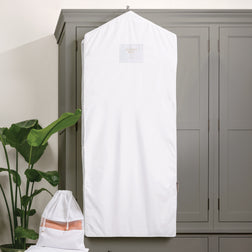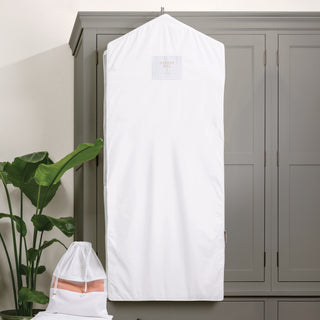Linen has several features that make it a popular sustainable fabric. In addition to being very durable, linen wicks away moisture from your body, giving it a cool, airy feel. And, the more you wash your linen, the softer and more absorbent it becomes.
Natural textiles like linen are ideal for those who want to shop more sustainably and protect the environment.
However, some people avoid wearing linen because of the misconception that it is high maintenance. Actually, it is simple to care for once you know the best practices for keeping it in pristine condition.
Linen has several features that make it a popular sustainable fabric. In addition to being very durable, linen wicks away moisture from your body, giving it a cool, airy feel. And, the more you wash your linen, the softer and more absorbent it becomes.
Yet, linen’s strength is also somewhat of a weakness. Though linen fibres are strong, they also tend to be rigid. Once linen is wrinkled, it stays wrinkled until washed. And, sweat makes those wrinkles crease more deeply.
But, when cared for properly, linen will be one of your favourite options to wear, especially in warmer months.
General Guidelines When Caring for Linen
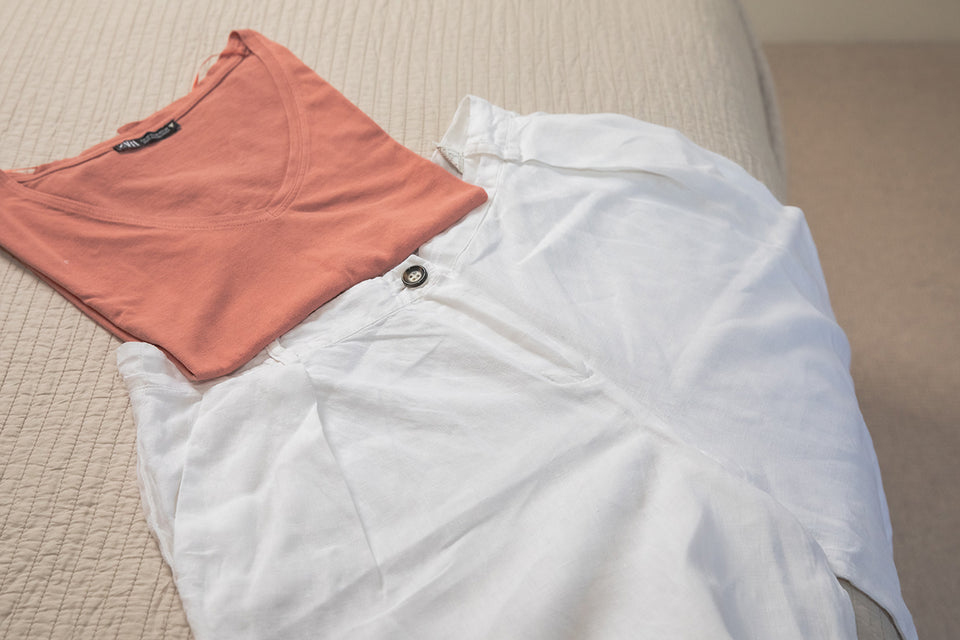
Linen can be machine washed, hand washed, or dry cleaned, but regardless of the laundering method, keep these four general guidelines in mind.
- Wash in cool or cold water
- Use mild detergent
- Handle linen gently while laundering
- Avoid heat exposure
In addition to these guidelines, there are specific tips regarding each stage of linen care.
- Wash Linen Clothing
- Machine Wash
- Hand Wash
- Dry Clean
- Remove Stains from Linen
- Dry Linen
- Iron Linen
- Specific Linen Item Care
- Dresses
- Shirts
- Bedding
How to Wash Linen in the Washing Machine

Machine washing is the most convenient way to clean linen and remove wrinkles, but this method also has a downside.
If not washed correctly, linen garments can shrink in the washing machine. As mentioned in the general guidelines, linen should only be washed in cool water. Warm water will relax the fibres in the fabric, causing it to shrink.
To prevent linen from shrinking in the washing machine, follow these steps:
Steps to Machine Wash Linen
- Always wash linen by itself with no other fabrics. Separate light and dark linen from one another. Any items with zippers or embellishments should also be separated to prevent tears and pulls. Also, avoid mixing delicate linen pieces with heavier items like bedding.
- Remove any items that say “dry clean only.”
- Turn each item inside out, and place it in a mesh laundry bag. Put the items in the washing machine, taking care not to overfill the machine.
- Select a cool or cold water temperature. The water temperature should not be above 104°F/40°C.
- Use the gentlest cycle available. Linen is lightweight and breathable, making it vulnerable when washed. The less agitation in a cycle, the better.
- Use a gentle detergent, such as one formulated for delicate fabrics. Never use bleach on linen, as it may weaken the fibres and discolour them.
- Do not use fabric softener, which adds chemicals to fabric fibres, making the linen far less breathable. This reduces the moisture-wicking ability of linen.
- Start the washing machine.
How to Hand Wash Linen
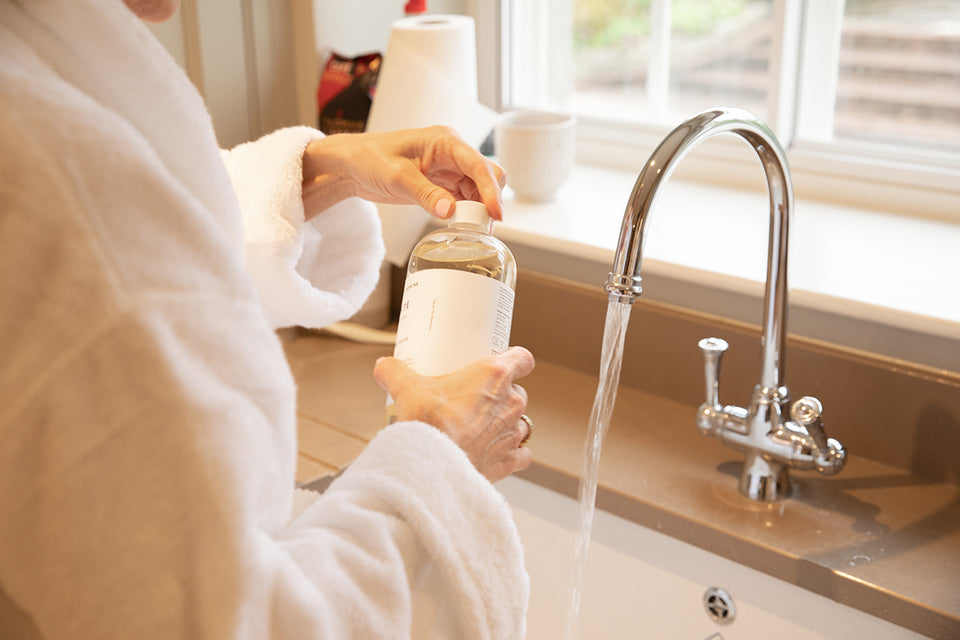
Hand washing linen has a couple of benefits compared to machine washing. First, you can control the temperature more easily. Secondly, you can agitate the linen with a gentler touch than a machine, thereby reducing the chance of shrinkage, pulls, and other damage to your garments.
However, one of the biggest struggles when hand washing is rinsing. If you rinse linen incorrectly, an item can be stretched and misshapen.
The correct way to hand wash linen is as follows:
Steps to Hand Wash Linen
- Wash only one linen item at a time.
- Fill a wash basin or sink with enough cool water to cover the linen garment entirely. But do not place the garment in the water yet.
- Add 1 teaspoon of gentle detergent to the basin. A little detergent goes much farther than you would think, especially if you are only washing a couple of items.
- Submerge the linen garment in the water. Let the item soak for about 10 minutes.
- After soaking, start to move the items around in the water gently. This allows some of the detergent to rinse out. Avoid wringing the fabric or twisting it, which will damage the fibres.
- Continue this for a few minutes until there are no more suds coming from the linen.
- Spread out a towel on a flat surface, and lay the garment out flat on the towel. Starting from the bottom, roll the towel and the garment up together. Softly press on the towel to remove excess moisture from the linen.
- Let the item air dry or place it in the dryer on a low temperature. If putting the garment in the dryer, remove it after a maximum of five minutes, and let it air dry the rest of the way.
Dry Cleaning Linen
One of the reasons you should always check the care label on clothing is to see how it should be washed. While it is rare to see linen with a dry clean only label, it does happen.
But if “dry clean only” is not listed on the label, you can still dry clean the item. The advantage of dry cleaning is the linen won’t be agitated and exposed to hot water. Your linen garments come back prim, crisp, and without a single crease in sight.
How to Remove Stains from Linen
With linen, it’s important to act fast once an item is stained or risk that spot remaining forever. A dry stain is much harder to remove. For the highest rate of success, treat a stain within 30 minutes of its occurrence.
Removing linen stains requires natural and gentle solutions. Otherwise, you could damage your garment while trying to remove the stain.
The two best ways to remove stains from linen involve common household products you likely already have at home.
Corn starch and Baking Soda
Mix equal parts of corn starch and baking soda, and sprinkle the powder onto the stain. If you only have one of these ingredients, it will still work in a pinch. The corn starch and/or baking soda will immediately start absorbing the moisture.
Rinse out the powder before washing the linen items.
White Vinegar
If you accidentally spill wine on linen clothing, white vinegar can save the day. Add white vinegar to your normal washing routine. First, remove any excess substances, if it’s something thicker than wine such as tomato sauce. Sprinkle corn starch or baking soda on the stain, then rinse out as detailed above. Add white vinegar to cold water and wash. If the stain lingers, repeat washing. Do not let the item dry.
How to Dry Linen
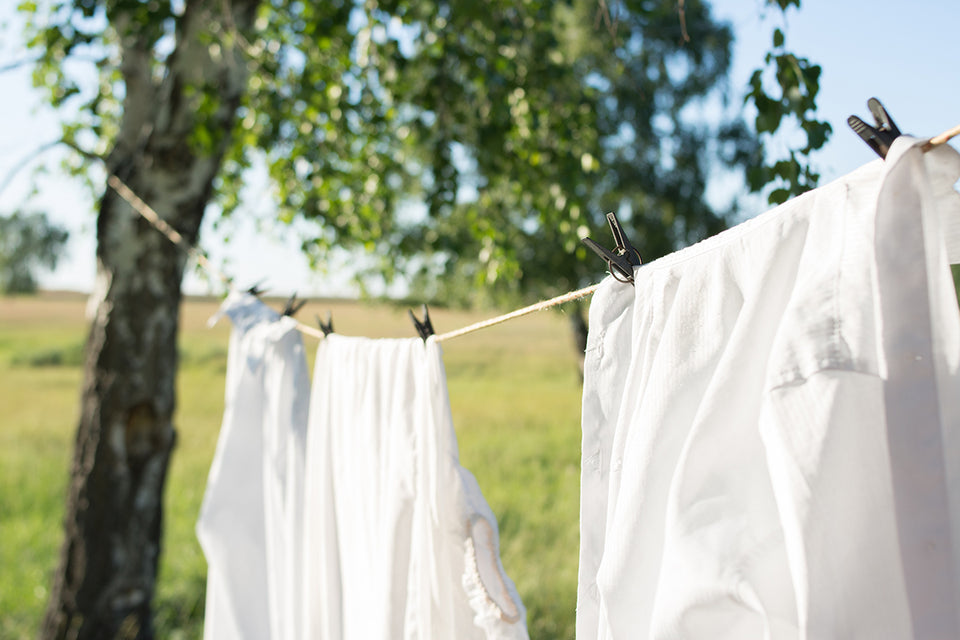
Similar to washing, there are a couple of options for drying linen: air dry outside, hang items on a padded hanger, or partially dry in the dryer.
If you would like to use the dryer, place linen in the machine for no longer than 5 minutes on the lowest heat setting. Any more than that, and your linen could wrinkle or shrink.
Another alternative is to roll your linen items up in a towel to squeeze out some of the moisture then place them on a drying rack or hanger.
However, air drying linen items outside is often the best option if you have access to a clothesline.
How to Iron Linen
If a linen garment still has wrinkles after washing, it is time to iron or steam it. While the item is still slightly damp, lay it flat on an ironing board. Set your iron to steam mode and on low heat. Since the steam setting does not require direct heat, the garment will not be damaged and the wrinkles will ease.
If your garment is wrinkled and dry, dampen it slightly before using the steam iron.
You can also use the iron to refresh worn but clean garments. Spray the clothing with some water or resinous sizing, and then iron. Sizing, an alternative to laundry starch, helps linen hold its shape and may help the fabric resist wrinkling.
How to Wash Specific Linen Items
Linen Dresses
Before washing a linen dress, check the care label. Many linen dresses are not 100% linen but a blend that often requires some special care.
You should also wash your linen dresses in bold or dark colours in cold water and separate from other pieces. Sometimes, dark coloured linen will discolour or fade when washed with other items.
Regardless of the method you use to wash your linen dress, turn it inside out, zip any zippers, and button any buttons.
If using a washing machine, only wash a couple of linen dresses at a time. Choose the maximum fill amount, ensuring that the linen dresses are properly washed and rinsed. You can also wash linen dresses with similarly coloured cotton.
When the dress is washed, lay it flat on a clothes rack rather than hanging so the fabric will not stretch. After the dress is about half dry, you can hang it.
Linen Shirts
Linen shirts can also be washed in a washing machine, but as with dresses, turn shirts inside out, fasten buttons, and zip zippers. If you have several linen shirts that need to be washed, wash a load containing only those shirts. You do not want to put linen shirts in with wool, denim, canvas, or other materials.
Avoid using fabric softener on linen shirts. The residue left behind will harden on the fibres, making the linen shirt less breathable. It’s also not recommended to use bleach on linen; it could cause items to rip.
After washing linen shirts, place them on a padded hanger and let them air dry. Padded hangers are a must. Other types of hangers could scratch the linen or cause dents and wrinkles in the fabric. Take some time to shape the shirts on the hanger, smoothing down collars and cuffs.
Linen Bedding
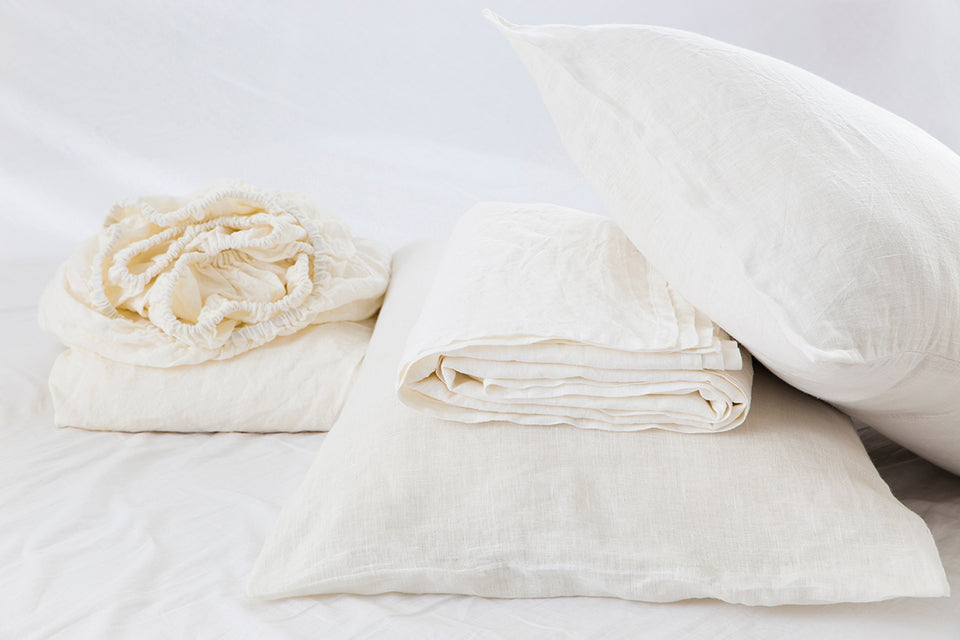
Washing linen bedding can be a bit more complicated than other linen items. Linen bedding has to be put in the washing machine; it is too bulky and heavy to wash by hand.
And, each blanket and sheet should be washed separately. This is going to take some time, but it’s worthwhile. Do not mix linen bedding with other materials, including towels. Any bedding or pillow covers with embellishments should be turned inside out and put inside a mesh laundry bag.
Other than that, follow the same steps mentioned above. Use cool water and mild detergent and skip the fabric softener and bleach. Lastly, it is ideal to hang linen sheets, blankets, and pillowcases on a clothesline to dry.
FAQs
1. Is it OK to machine wash linen?
Yes, you can wash linen in the washing machine. However, linen can only be washed with other linen and should be laundered in cool or cold water. Since the fabric is notorious for wrinkling and is rather thin, select a gentle cycle and use mild detergent. Avoid using heavy duty bleach and fabric softener.
2. Can you wash and dry 100% linen?
Yes, you can wash and dry 100% linen. The best method for doing so is to avoid any machines and use your hands. By hand washing your linen, you ensure that it gets the gentlest treatment. It is best not to put linen in the dryer. Heat will cause the fibres in the fabric to shrink and wrinkle, especially at higher temperatures. Use a drying rack or clothesline instead.
3. Does linen shrink in the wash?
When you use cool water and do not expose linen to high heat, linen will not shrink in the wash. For this reason, you should not put linen in the dryer unless there is a very low heat setting, and even then, only for five minutes.
4. Can you put linen in the dryer?
You can put linen in the dryer, but it is risky. When exposed to high heat, linen shrinks and wrinkles. Unless your dryer has a very low heat setting, it is best to avoid it and air dry your linen garments and bedding instead.

Although linen requires special attention and care, it is worthwhile because of its durability, breathability, and sustainability.
Hayden Hill is also deeply committed to sustainability. Our bags are made of 100% organic cotton certified through GOTS, which also guarantees the ethical treatment of workers. Hayden Hill delivers sustainable and beautiful garment care to preserve and protect the clothes you love most.

